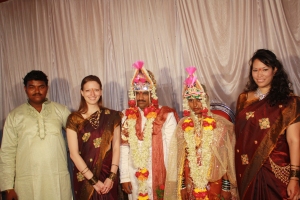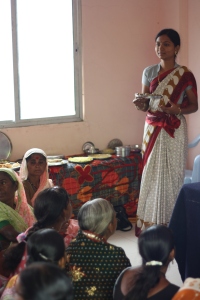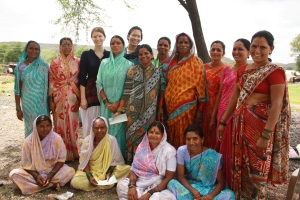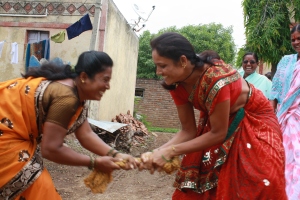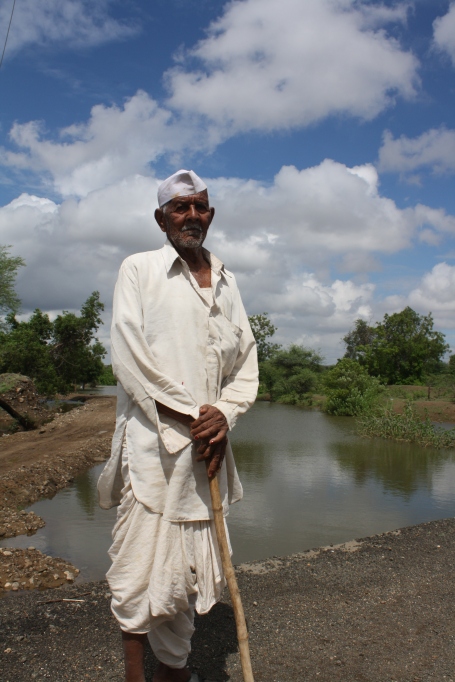
Government provided mud huts in a tribal village
The past few weeks Alyson and I have been focusing on gathering data for our report, which explores the impact of SHG involvement of female empowerment and the further implications of community involvement. The parameters of our report find us examining Stage 5 villages, which are SST’s most developed villages, where they have spent the most time and are confident that the village is sustainable. Although it has been fascinating to gain a deeper look into the lives of those who live in the villages, after a few weeks of visits to the same six villages, Alyson and I were ready to visit somewhere completely different. Raj, the Field Director of the Shirur office, heeded our request, and we set off for a tribal village 2 hours away.
For the duration of the ride, Raj provided us with valuable insight into the tribal adivasi communities of India. Adivasi is an umbrella term that refers to the aboriginal population of India, who tend to live in geographical isolation in the hills or forests and are not part of the caste system. Much like the Native American community of the United States, their land was seized from them and subjected to ecological deforestation. In the tribal village we visited, the government provided reparations in the form of mud huts to the community
I had admired the scenery on the way to the village, which featured mist shrouded jade green hills. However, we learned that the land the huts are on is not farmable, forcing the inhabitants of the tribal hamlet to seek agricultural work elsewhere. We visited a woman whose sons and wives had left the community to partake in an unprofitable sharecropping arrangement. The sons’ children were left with the grandmother in the community who ensured they attended school. However, the school is not run properly, which is just one of a bevy a problems that face the community, such as rampant alcoholism, mistreatment of women, and subsisting on incomes that are below the poverty line (BPL). Schools in tribal villages only enroll up to 4th grade, and as a result, if a child/parent wants to continue their education, the child often must endure a long commute to school, or live away from home in a hostel near the school. The tragedy of the lack of educational facilities in tribal hamlets only serves to propagate the enduring cycle of problems each generation faces.


